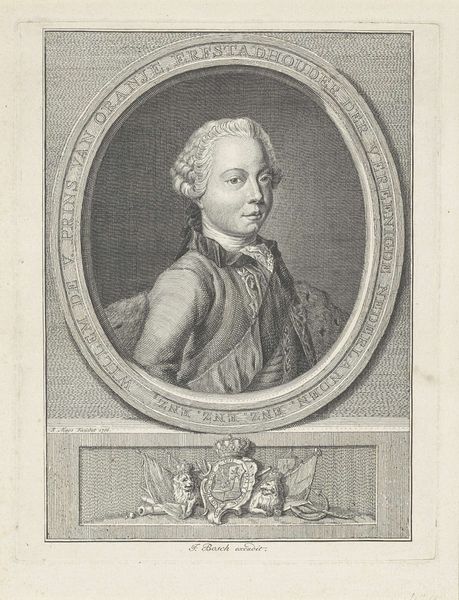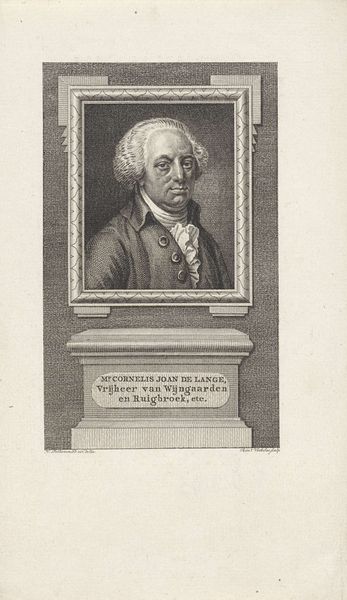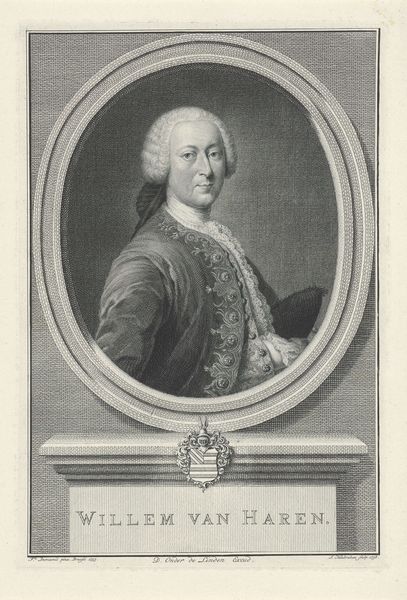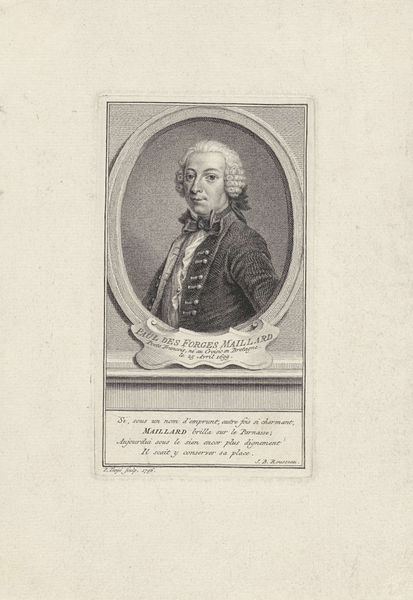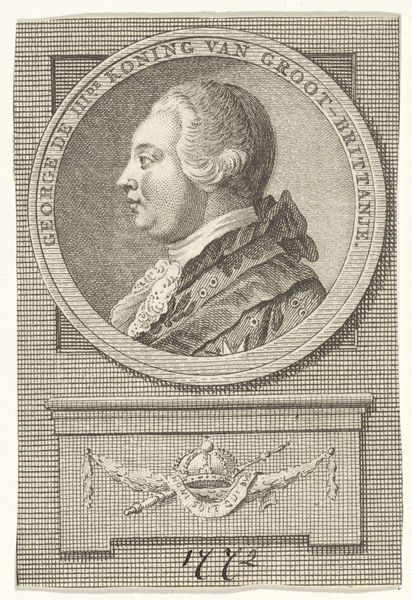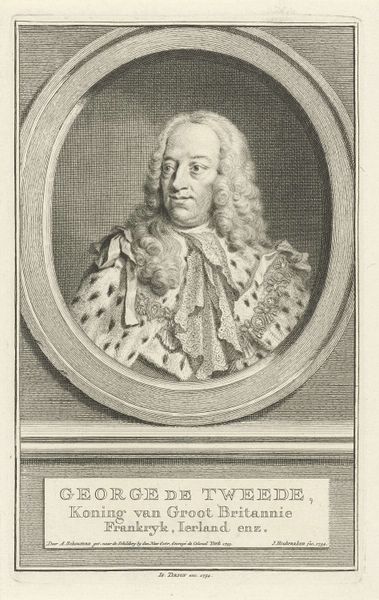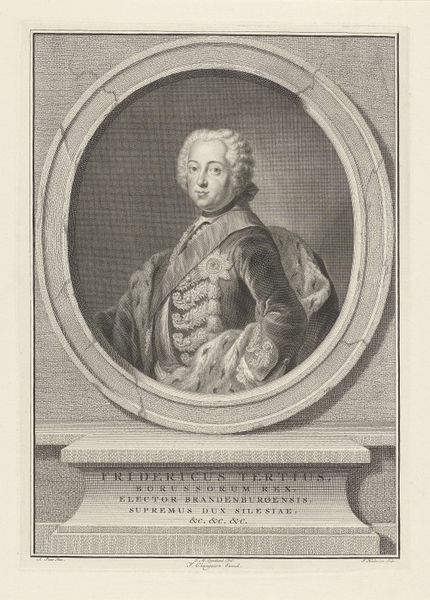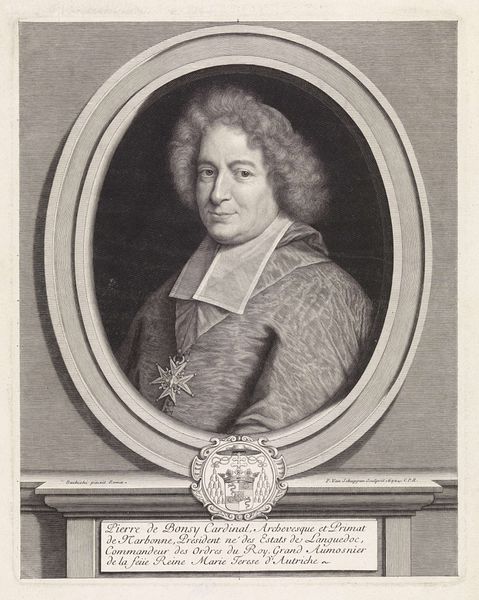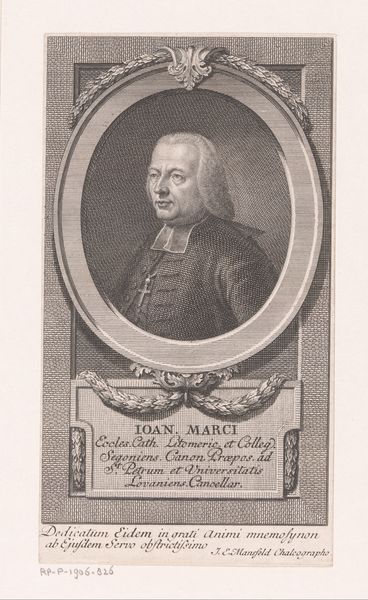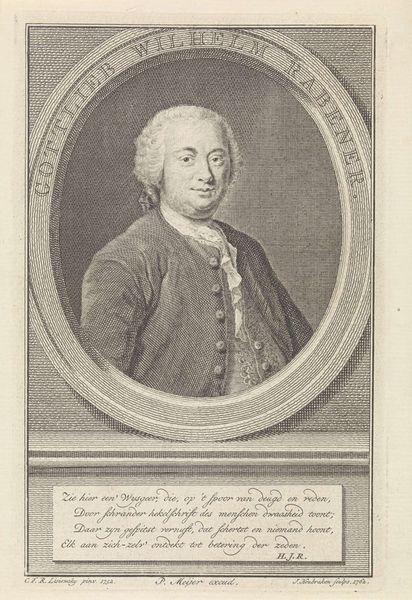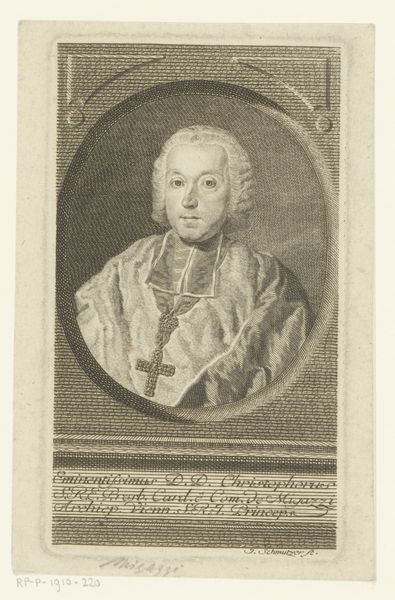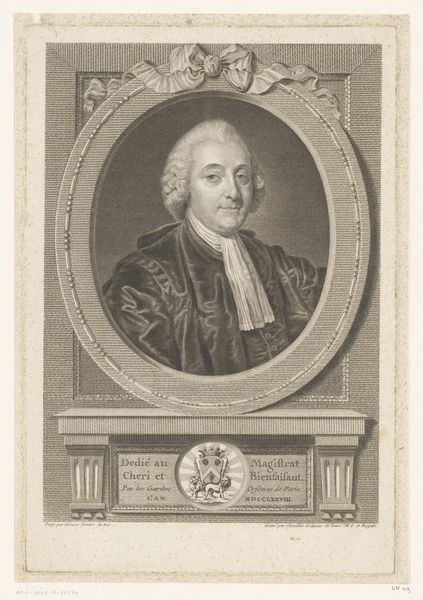
metal, engraving
#
portrait
#
baroque
#
metal
#
old engraving style
#
history-painting
#
engraving
Dimensions: height 174 mm, width 110 mm
Copyright: Rijks Museum: Open Domain
Curator: This engraving by Jan Caspar Philips, made in 1735, is a "Portret van Frederik Willem II"—Frederick William II, that is. It's part of the Rijksmuseum collection. Editor: Wow, there's a stiffness, isn't there? He seems trapped, framed by that austere oval. But his coat…it hints at such rich layers, and labor in creation. How was something like that even produced back then? Curator: Indeed. As a baroque piece, the meticulous detail speaks volumes. Notice the sharp lines used to render his clothing and powdered wig, all the emblems of status. He's framed by the very symbols of his power, a visual echo chamber of his role. It makes you wonder how much choice he really had, even as a ruler. Editor: It brings the cost of kingship to life in the way that Philips handled the metal—I suppose that’s what gives this portrait its impact. Every etched line a tiny burden, isn't it? All that handiwork—consider the engraver's time, skill, tools… This was serious production, elevating a singular figure above, well, everyone who helped make it. Curator: A heavy crown to wear, manifested quite literally here! I feel both pity and a sort of distant awe. The artist has managed to show the cold formality while hinting at the man beneath. The engraver is walking the line, reflecting back this duality to the audience. The eyes almost break that stern façade, or so I think. Editor: It really calls into question these historical roles. How we elevate people using not paint and canvas, but through processes that transform simple materials and exploit labour. I can’t stop thinking about all the work, so many impressions on so many pieces of paper, now all relics, fetishizing the life of someone born to a system that profited handsomely. Curator: The layering adds depth to what is, on the surface, a pretty straightforward portrait of power. Makes one wonder about its distribution, now and then. Editor: I appreciate you steering back to thinking about that singular moment, now transformed through this image, into a thing—and how things still have that strange power today.
Comments
No comments
Be the first to comment and join the conversation on the ultimate creative platform.
